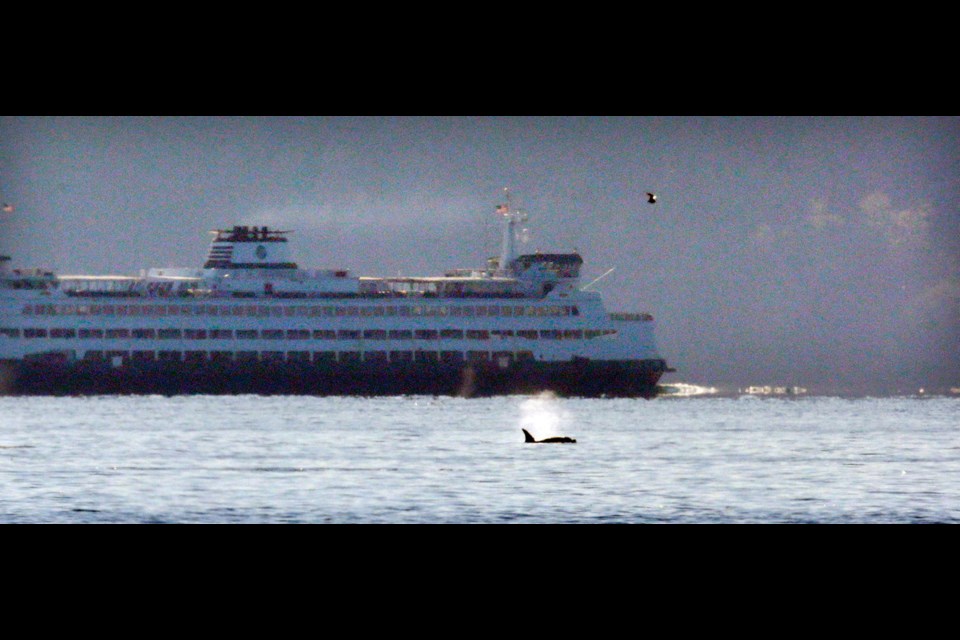An extraordinary string of recent whale encounters around Vancouver Island is likely due to luck, not one factor, experts say.
“This has not been a typical year,” said John Ford, head of the cetacean research program at Pacific Biological Station in Nanaimo. “But in terms of connections, I’d say it’s animals being drawn to preferred prey and the coincidence of lucky sightings and people capturing them on phones and video.”
The “biggie” of the bunch is the endangered North Pacific right whale, spotted twice in B.C. waters for the first time in 60 years.
“I never thought I’d see one in my lifetime in these waters,” Ford said. This summer, he saw two. The first was feeding in waters near Haida Gwaii in June. “They have huge mouths, like a big sieve moving through the water feeding on plankton just below the surface.”
The second right whale was spotted at the entrance to Juan de Fuca Strait near Victoria on Oct. 25, hanging out in a group of humpbacks.
“This one was huge,” said Ford, adding the last confirmed right whale sighting here was in 1951, when one was killed by whalers.
There have been other remarkable whale encounters:
• In May, a Campbell River man underwent facial surgery after his boat collided with a humpback whale in Kelsey Bay near the northern tip of Vancouver Island. This year humpbacks have been seen sporadically in unusual areas such as the west coast and Race Rocks, possibly due to the lack of migrating sardines this year, Ford said.
• In August, a Galiano Island resident captured three minutes of close-up footage as a pod of playful killer whales travelled through Active Pass. Ford said southern resident whales have spent less time in their usual spots near Haro Strait and more travelling up the west coast of the Island.
“Probably driven by prey abundance. There was a big return of Chinook salmon to the Columbia River. I could speculate they were feeding on those,” Ford said.
He said the increasing number of transient killer whales in the Victoria area was likely due in part to a rebound of harbour seal and sea lion populations.
• On Oct. 29, members of the endangered southern resident killer whales J-pod swam with a Washington state ferry as it carried tribal artifacts to a new museum at the ancestral home of Chief Seattle. The whales were likely in the area to feed off a bumper run of chum but First Nations leaders said their feeding break to accompany the artifacts was an auspicious welcome.
• On Halloween, passengers aboard the B.C. ferry between Galiano Island and Tsawwassen were treated to the sight of a superpod of about 1,000 Pacific white-sided dolphins moving through Howe Sound. Again, the spectacle was caught on video and shared through social media.
“It’s unusual to see that many within the Strait of Georgia but not uncommon in general,” said Lance Barrett-Lennard, project adviser for Wild Whales, the B.C. cetacean sightings network in co-ordination with the Vancouver Aquarium. He said what’s stood out for him this year is the unseasonably quiet behaviour of resident whales — which some link to increased shipping traffic.
“Every year is different. You think you see a trend and it changes,” Barrett-Lennard said.
Nick Claxton said recent whale encounters could have a deeper meaning, according to an Indigenous worldview.
“We see them as our relatives, as ancestors,” said Claxton, a member of the Tsawout First Nation and doctoral student and Indigenous academic adviser at the University of Victoria.
“All of these occurrences remind us of our place here and our connection to the natural world. It’s for the better of all of us to listen.”
He pointed out the intensity of sightings coincide with debates around increasing oil tanker traffic along the B.C. coast.



